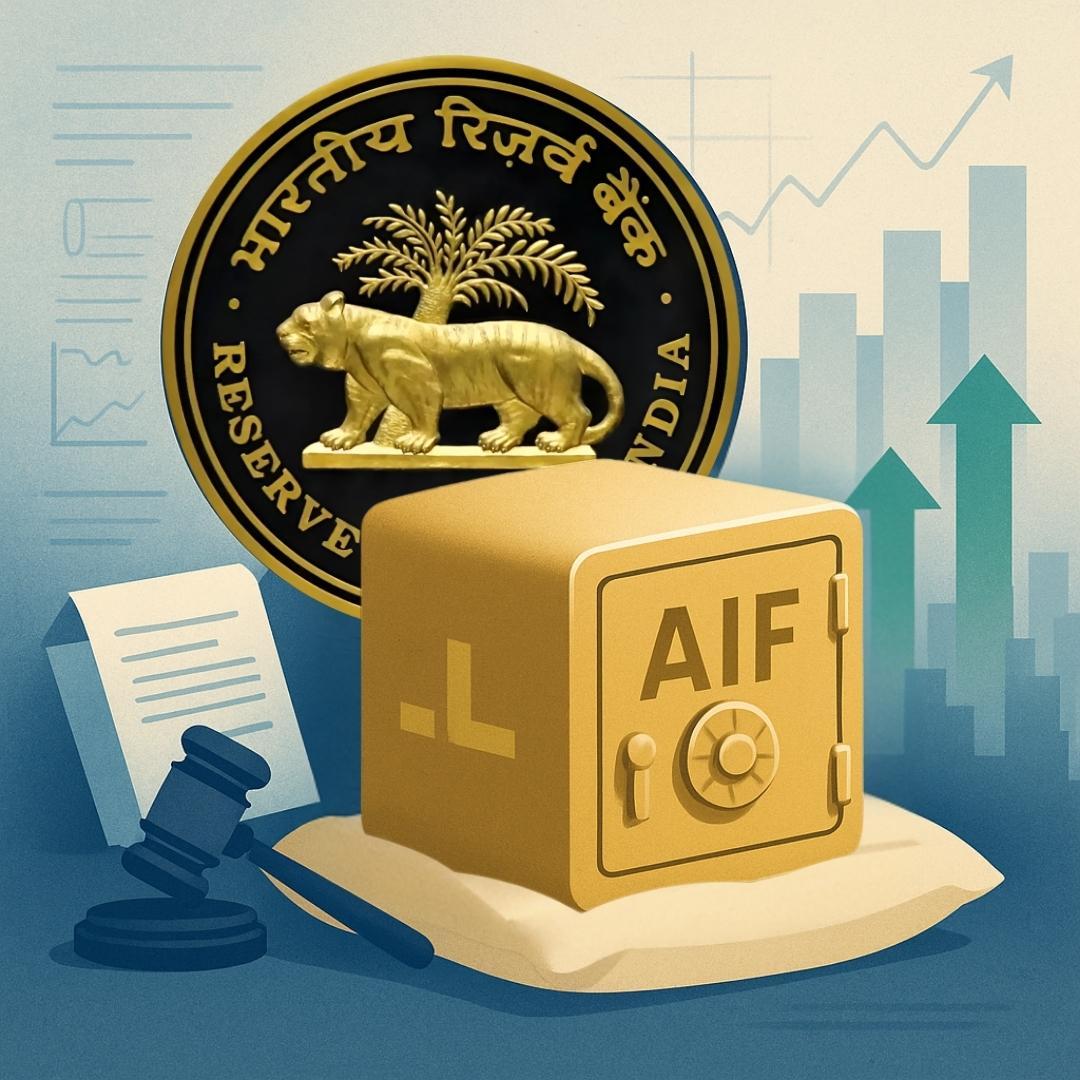
On May 19, 2025 (Monday), India’s Central Bank Reserve Bank of India (RBI) issued a revised draft directions on investments by Regulated Entities (REs) in Alternate Investment Funds (AIFs). The RBI said that on a review, it had observed that the regulatory measures undertaken earlier by it have brought in financial discipline among REs regarding the investments in AIFs.
The Central Bank said that in the meantime, market watchdog Securities and Exchange Board of India (SEBI) has also issued guidelines requiring inter alia specific due diligence about the investments in the AIFs.
In its draft proposal, the RBI said that a single RE’s contribution to any AIF scheme would be capped at 10% of the scheme’s total corpus. Further, a ceiling of 15% would be applicable for investment by all REs in an AIF scheme. It also said that investments by an RE up to 5% of the corpus of an AIF scheme would be allowed without any restriction. For instance, as per the draft proposal, an investment of up to 5% or less of an AIF scheme by a real estate regulated entity would not have any restriction, but if crosses 5%, restrictions are applicable.
Moreover, the Directive said that if an investment by any RE exceeds 5% of the scheme corpus and if that scheme has a downstream debt investment in a RE debtor company (excluding equity shares, compulsorily convertible preference shares and compulsorily convertible debentures), then the RE would be required to make 100% provisions to the extent of its proportionate exposure.
The Directive also mentioned that the Central Bank, in consultation with the Union Government, might exempt some AIFs that have been established for strategic purposes.
Earlier, on December 19, 2023, the RBI issued directives to the REs with regard to investments in the AIFs with an objective of addressing several concerns regarding possible evergreening through this route. Later, on March 27, 2024, the RBI also issued certain clarifications via its official circular.
When compared to its earlier circular in December 2023, a significant change has been made in the definition of the term "downstream investments" made by the AIFs. There was a little ambiguity in the original circular related to the definition. However, now, the RBI has outrightly excluded equity shares of the borrowing companies from this classification.
Simply put, in December 2023, the Central Bank prevented regulated entities from investing in the AIF scheme units that have downstream investments either directly or indirectly in any debtor’s company of the REs. The objective was to stop the practice of evergreening of loans. This Directive was sent to commercial banks, including small-finance banks, regional rural banks, primary urban cooperative banks, Central- and State cooperative banks, and to non-banking financial companies, including housing finance companies.
The December 2023 Directive was a blow to regulated entities as the RBI mandated the REs to liquidate their investments in AIFs within 30 days from the date of such downstream investment by the AIF. It said that any failure to comply mandates the regulated entity to make full provisions on such investments.
Financial experts say that the tweaks in the directives are aimed at achieving a balance between risk control measures and inflow of capital into sectors that have high growth potential. They also said that the move could unlock new avenues of partnerships between AIFs and fintech companies.
Experts in the subject say that though the RBI has relaxed the norms, through its current directive, most lenders would have already made appropriate provisions regarding AIFs as per the earlier Directive dated December 19, 2023. So, need to wait and watch to see its real impact.
The Reserve Bank of India has also invited comments on the draft directions from public/stakeholders on or before June 8, 2025.
Comments/feedback might be submitted via the link ‘Connect 2 Regulate’ on the RBI’s website or might be sent to:
The Chief General Manager,
Credit Risk Group,
Department of Regulation, Central Office,
Reserve Bank of India, 12/13th Floor,
Shahid Bhagat Singh Marg,
Fort Mumbai – 400 001